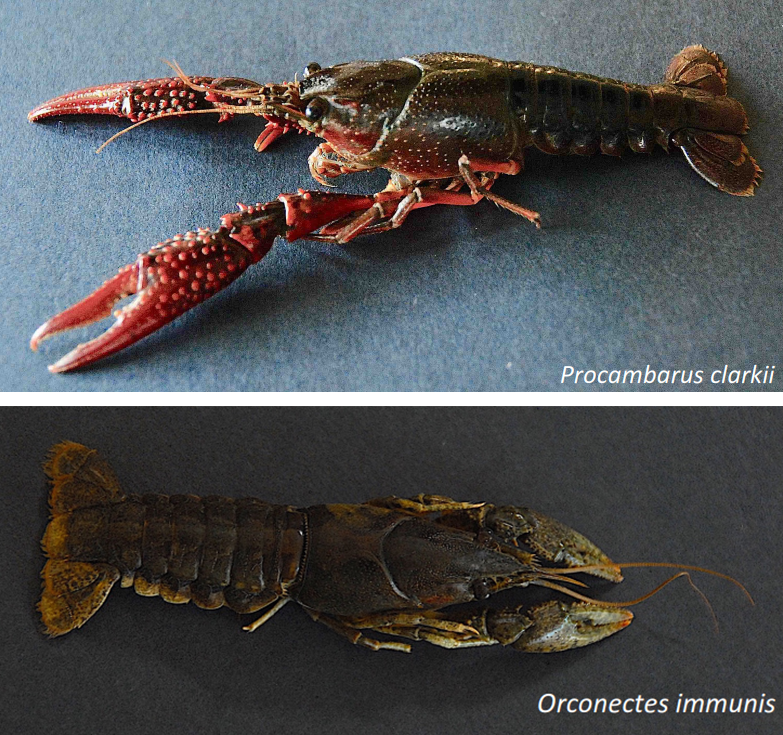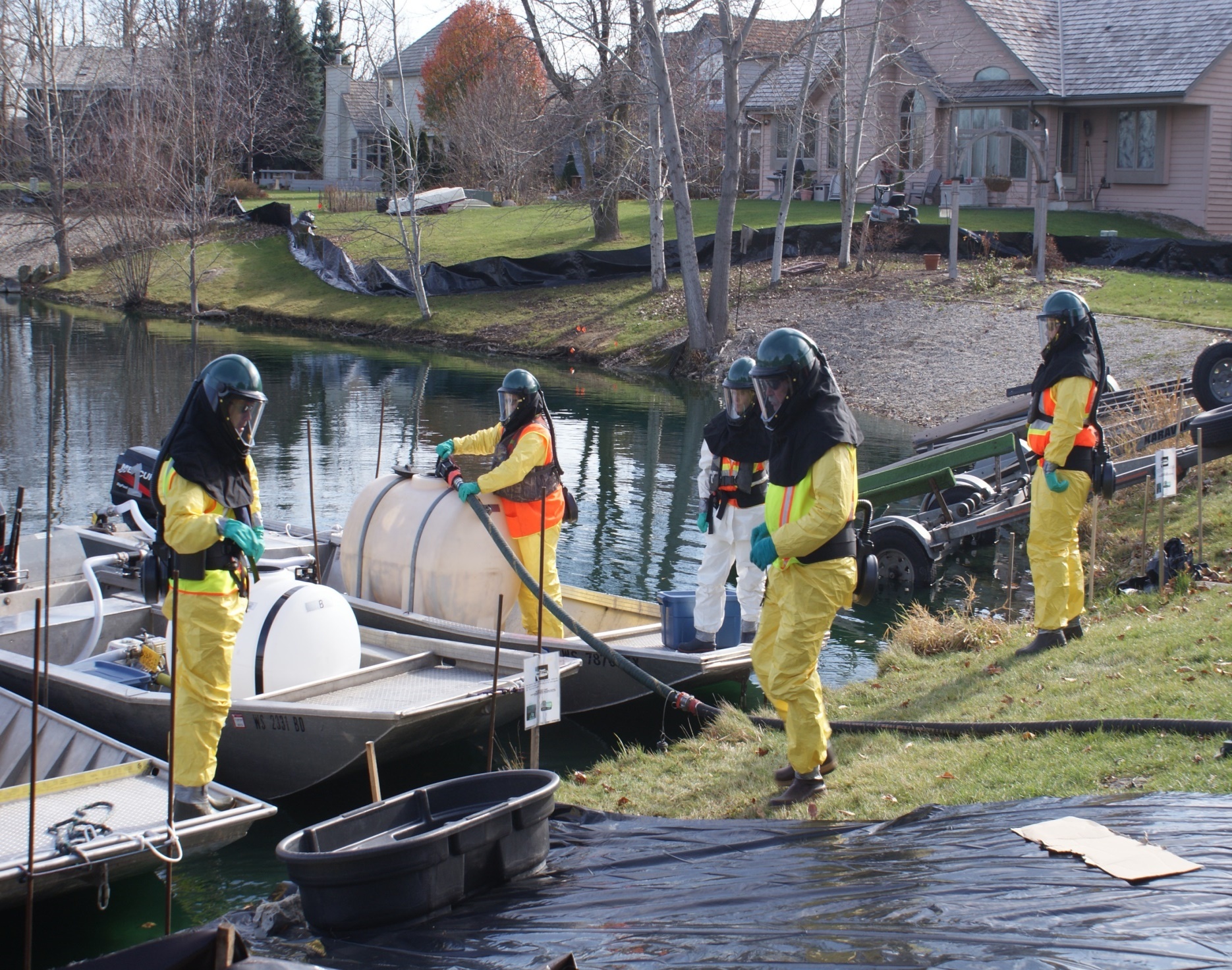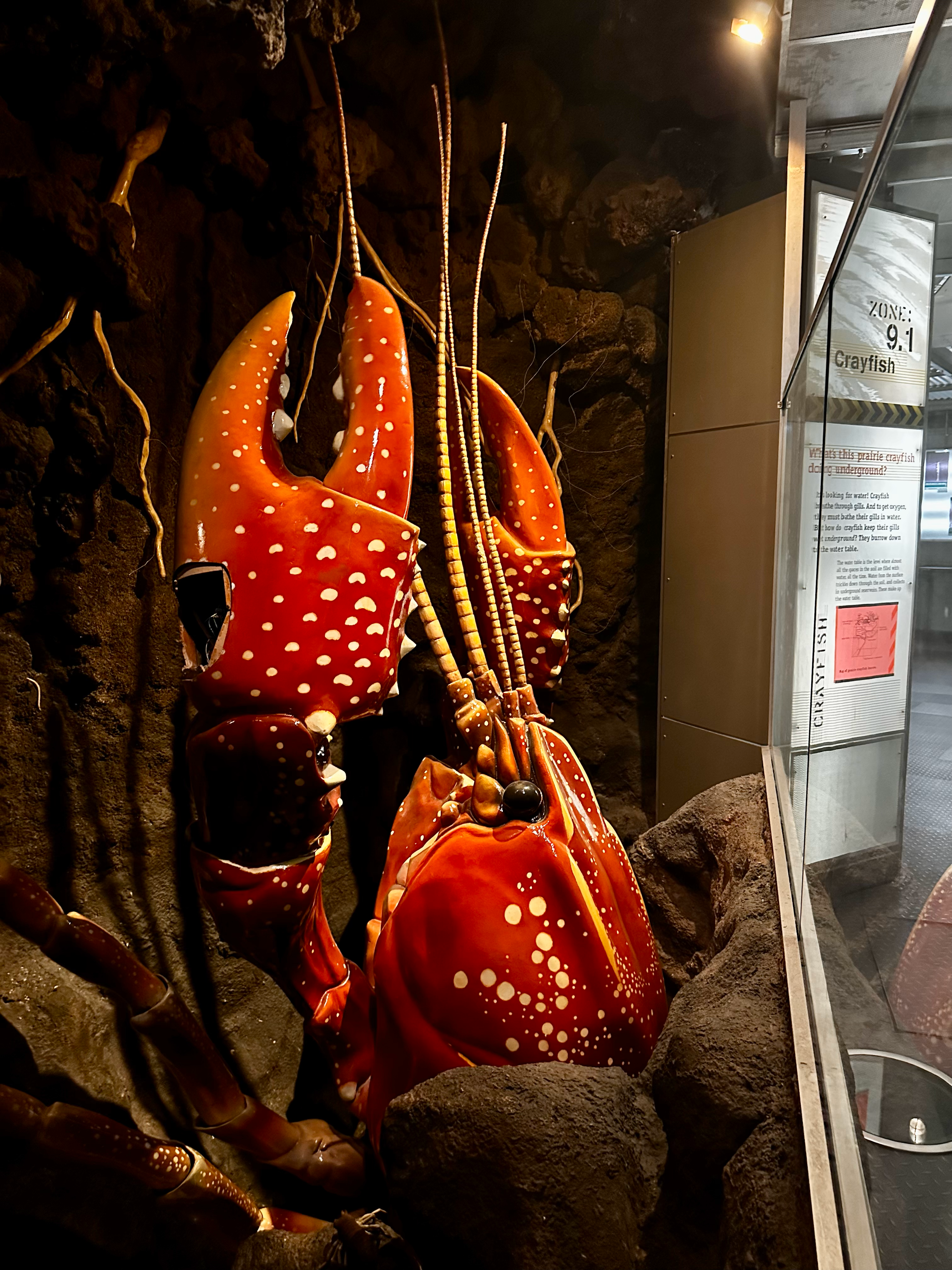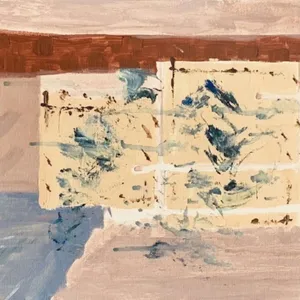If you’ve ever kayaked down the Chicago River or relaxed along any of the waterways in the area, you may have encountered all sorts of creatures — an enormous snapping turtle, a stray alligator or maybe something that looks a lot like a lobster.
A lobster living in Chicago water would be impossible. After all, they thrive in salt water and would not be able to survive in fresh water. But a Curious City listener swears she’s seen something lobster-like swimming around the city. So if it wasn’t a lobster, what did the listener see?
To find out, Curious City got on a boat with some scientists in search of this mystery crustacean.
It turns out the creature the listener saw was a red swamp crayfish, and its presence in Chicago waterways is a warning sign. According to one ecologist, that particular crayfish species currently inhabiting the Chicago River is second only to Asian carp in terms of its invasiveness and potential to wreak havoc on local ecosystems.

Something lurking in the water
The North Branch of the Chicago River around W. Foster Ave. is among the areas where a lot of red swamp crayfish hang out. Reuben Keller is a freshwater ecologist at Loyola University. He and lab manager Rachel Egly go out on the water regularly to set traps. On a sunny weekday afternoon, Egly pulls up a cage from the water to find two red swamp crayfish that are less than six inches long from claw to tail.

These creatures are bright red with two long antennae, pincer claws and eight legs. They look like lobsters, but much smaller. American lobsters can get up to about two-feet long while red swamp crayfish max out at about five inches.
Unlike calico crayfish that are native to the Chicago area, red swamp crayfish come from the southern U.S. They’re a big part of the food culture in Louisiana, where fishermen have been harvesting them commercially since the late 1800s. But it’s not recommended to eat the ones found in the Chicago River because their densest populations are found about a mile downstream from a sewage treatment plant.
There are several theories on how the red swamp crayfish got to Chicago. The crustaceans could’ve been used as bait, some may have come from pet shops or a few may have escaped a pending boil. But Keller believes the likeliest culprits are local elementary schools.
“They’re a great classroom pet for elementary schools. They’ll stay alive for a long time under the pretty awful conditions that elementary students will subject them to,” he said.
At the end of the school year, Keller thinks some classes may have turned the crayfish loose in the river without realizing these things are rather invasive.
Claws out of control
The red swamp crayfish are known as one of the most invasive species in the world. They can take over the waters they inhabit. They eat fish eggs, which affects fish reproduction. And they outcompete both fish and native crayfish for prey.
 “The red swamp crayfish is a burrowing species,” Keller said. “In some parts of the world, it will weaken levees and lead to levee failure and flooding.”
“The red swamp crayfish is a burrowing species,” Keller said. “In some parts of the world, it will weaken levees and lead to levee failure and flooding.”
Keller said that if Asian Carp are a code red issue for the Illinois River, he predicts that the red swamp crayfish could be just one step below that. He doesn’t know yet the impact the creature has had on the area, but he knows the problems they can cause if things get out of control.
It happened in southeast Wisconsin in 2009. The Wisconsin Department of Natural Resources kept getting calls from residents complaining about crustaceans on their lawns.
“They were just being aggressive to the homeowners … They don’t back away or move away. They just lift up their claws and show that they are ready to fight,” said Bob Stroess, who enforces Wisconsin’s trade rules for commercial fish and aquatic species.
Stroess said it took four years and $800,000 to remove the red swamp crayfish that had taken over two ponds — one in Kenosha and the other in a subdivision about 20 miles northwest of Milwaukee. Wisconsin officials had to put fabric lining around the ponds and a metal fencing with rocks on top of that to keep them from burrowing down or burrowing back up. They also used chemicals to kill them, and had to completely fill one pond as a last resort.
“No state, no city, no county can afford the cleanup for these if they expand beyond a small little area,” Stroess said.
Keeping crayfish in check
Bringing red swamp crayfish into Wisconsin alive is illegal now. That’s also the case for Minnesota, Michigan and Illinois.
Conservation police officers are charged with enforcing that law in Illinois. One such officer is Brandon Fehrenbacher, who oversees the Illinois Department of Natural Resources’ Office of Law Enforcement Invasive Species Unit. His purview is all invasive species, but he’s doubled down on the red swamp crayfish in recent years.

“There are hundreds of invasive species that are out there, but [the red swamp crayfish] is a common one we started to recognize and see lots of people having — not just fishermen, but also food markets,” Fehrenbacher said. “We started a campaign to identify and notify distributors of the red swamp crayfish that you can’t ship to Illinois.”
Dead, frozen red swamp crayfish are allowed in Illinois. But having, importing or selling live crayfish in Illinois carry penalties ranging from a petty offense to a Class 3 felony. Fines go from $195 to tens of thousands of dollars.
A lot of the time, people just don’t know the law and need to be informed. But from a culinary perspective, there’s a strong desire to bring them in alive: That’s certainly the preferred way to boil them, according to just about every video tutorial online.

Still, the state’s work stops much of the bleeding, so to speak. But it doesn’t reduce the population that’s already here. That’s why part of the work Keller and his team are doing involves killing red swamp crayfish.
Keller’s work life and personal life collided over the red swamp crayfish when his own daughter’s elementary school classroom had one as a pet.
“I was talking to the teacher throughout all this and sort of nudging and saying this is an invasive species,” he said. “When you’re done with the crayfish, you need to do the responsible thing, and that is to kill the crayfish.”
In the end, Keller was the one who had to kill the crayfish, which he said is a sure way to create a rift between yourself and your child.
 For now, his lab currently has about 200 traps in the water, which are emptied out twice a week throughout the summer.
For now, his lab currently has about 200 traps in the water, which are emptied out twice a week throughout the summer.
“Our first priority is to figure out how to reduce the population because based on everything we know, there’s really good reason to believe that they are having large impacts here, where they’re established,” he said.
Keller’s lab is seeing fewer red swamp crayfish in the traps these days. They’re still experimenting with their traps with the hope of catching even more. So far, they’ve learned, they catch more crayfish when they use hot dogs as bait.
But the most difficult part of reducing the population is that Keller and his lab are the only ones doing this work. The trapping work that Keller and his lab are doing to keep the Chicago population at bay is taxing. They’re just one lab and they’re outnumbered by the crayfish.
The least the public can do is not bring live crayfish around these parts. If you spot one, think twice before you kill one yourself: It takes some training to properly identify the red swamp crayfish (while the adults are bright red, the juveniles look similar to some native crayfish). The safest option would be to contact the Illinois Conservation Police.
Keller said volunteers could be a valuable part of the culling work, but they should “be part of a well-organized effort” that has the proper training, time and resources required to make a meaningful impact.
You can learn more about red swamp crayfish research at the Keller Lab website.
Laura Pavin is a journalist living in the greater Chicago area.




 “The red swamp crayfish is a burrowing species,” Keller said. “In some parts of the world, it will weaken levees and lead to levee failure and flooding.”
“The red swamp crayfish is a burrowing species,” Keller said. “In some parts of the world, it will weaken levees and lead to levee failure and flooding.”

 For now, his lab currently has about 200 traps in the water, which are emptied out twice a week throughout the summer.
For now, his lab currently has about 200 traps in the water, which are emptied out twice a week throughout the summer.


